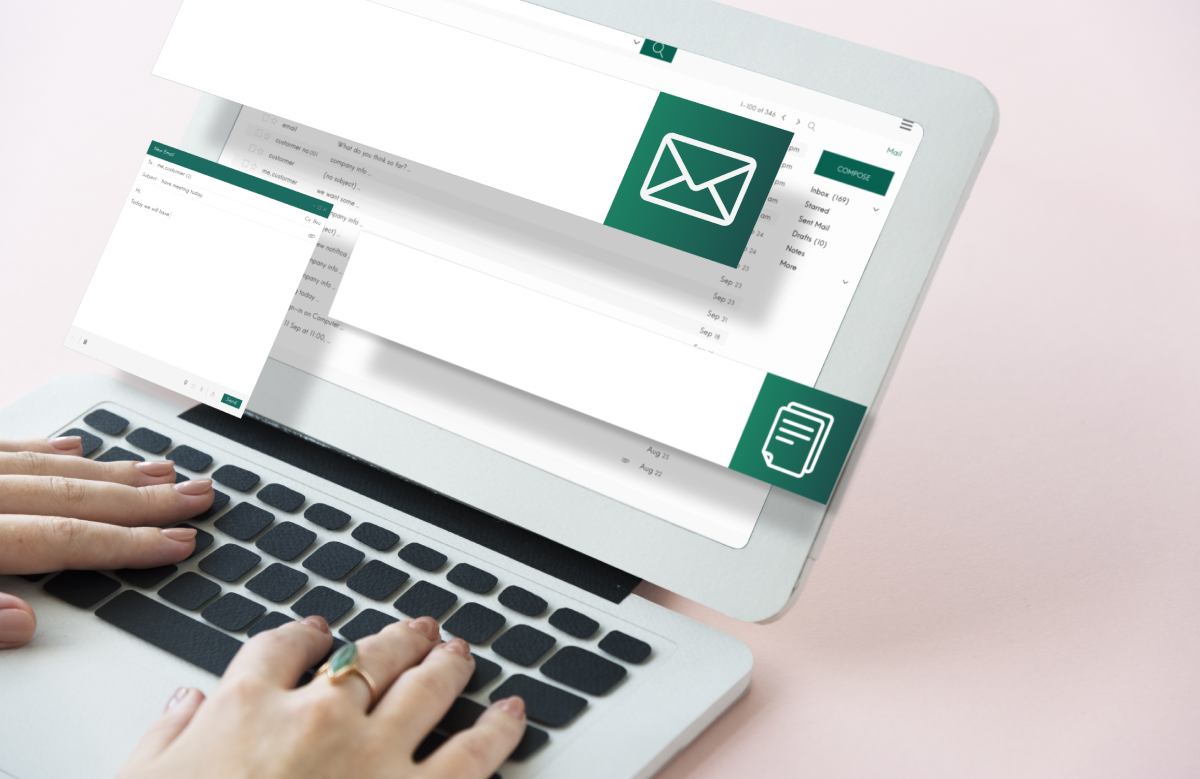Do you also find it difficult to reply to or write an email? It is particularly difficult for young professionals to write messages correctly at the beginning. This is how you answer e-mails correctly and write business e-mails with confidence.
Table of Contents
General Email Tips
Great care is required, especially when applying online and when contacting HR managers or potential employers by email. With business e-mails, the so-called netiquette comes into play, which should be taken into account in every electronic exchange of information.
The word ” netiquette ” is a combination of the terms net for Internet and etiquette for good behavior and includes some rules that should be observed when writing and answering e-mails, especially in the application process and with business e-mails.
Just like letters, non-private e-mails must therefore be meaningful and correct and contain clear messages. The request should be formulated clearly and in short sentences. This saves the recipient time and makes it easier to understand.
Timing
A business or official e-mail should be answered within 24 hours if possible. Weekends are an exception here. In the case of vacation, an out-of-office notice should be used to indicate that the response may be delayed.
Absence
If you are prevented from doing business, you should set up an out-of-office notification so that senders are informed that they must wait for the reply. Example of an out of office notice:
Ladies and Gentlemen
Thank you for your message.
From [date] up to and including [date] I will unfortunately not be in the office and therefore cannot reply to your message. Your message is not forwarded. In urgent cases, please contact my colleague Mr./Ms. [name] at [e-mail address].
Thank you for your understanding.
Kind regards
length Of An Email
If your job involves writing and replying to emails, it’s important to watch the length of your message. As a rule of thumb, remember that the entire message should fit on a laptop screen without the reader having to scroll down.
Structure E-mails Correctly.
The correct structure of an email:
- meaningful subject line
- polite form of address
- short introductory sentence
- Main part divided into paragraphs
- friendly closing sentence to say goodbye
- Greeting, do not abbreviate MfG!
- First and last name of the sender
In the case of a business e-mail, this is followed by a signature and the information under company law.
Attachments In Emails
Of course, e-mails are often used to forward documents . However, pay attention to the attachment :
- Briefly refer to the appendix in the text and which document it has: Attached you will find a list of the expenses in an Excel file.
- The attachment should not be larger than 2 MB, maximum 5 MB.
- Not to send too many documents or only really meaningful documents.
- For e-mails outside the company, use formats such as PDF, JPG or ZIP that can be opened by everyone.
- Always remember: readers must first open the attachment, then download and save it. That takes time. It therefore makes more sense to send a link to the document on the company server in the case of internal company e-mails instead of an attachment. Another option is to put a preview image in the message, for example if it’s just a short vote.
E-mail Or Personal Conversation?
Especially in the case of far-reaching or complicated issues, you should weigh up between an e-mail and a personal conversation. It is often more effective and faster to explain the facts to the other person in a conversation than in writing. So before you struggle for half an hour to write down your explanations and then go back and forth for five more messages to clarify any questions that have arisen, it makes more sense to pick up the phone or arrange a face-to-face meeting. Then you can always write an e-mail in which you pick up the most important points.
How To Write An Email
The Right Start
The subject comes first. Readers see this before they even open the e-mail. From the subject line, recipients should be able to tell immediately what the message is about. For example:
- Employee appraisal on Friday, 03.05.
- Invitation to the “Soft Skills” seminar
- Presentation documents for the customer meeting with XYZ
The correct and complete salutation is just as important as the subject of the e-mail. When it comes to addressing, Dear Ms./Mr. XY has prevailed.
If you have already exchanged a few messages, the more informal Hello Mrs/Mr XY can sometimes be used. And with work colleagues with whom you are on first name terms, you can also say hello, Klaus.
When addressing the email, it is also important to use the correct title. If you write university professors, the word professor is always written out, with a doctorate title with Dr. is abbreviated.
If the recipients have several titles, e.g. Professor Dr. Müller, only the highest title is mentioned in the salutation, in this case Professor Müller.
Structure In The Main Part
In the main part, you should briefly and concisely talk about what the request to the readers is. Make sure to avoid nested sentences and prefer to use main clauses.
To make reading easier, you can bold words sparingly(!) to emphasize important information.
Bullets and paragraphs can also help readers quickly understand content and respond to each point in an email.
Style And Formalities
An email isn’t a phone call, so it shouldn’t be written like a casual conversation. If you want your message to be taken seriously, be sure to use correct spelling , grammar, punctuation, and capitalization.
Ending
At the end of your e-mail there should be a closing formula and a greeting. The most common is Sincerely , but do not use the abbreviation ” MFG “.
After that, there is no comma, but you close with your last name and first name as well as your e-mail signature. You can also include the greeting and your name in your signature.
Correctly Reply To An Email
When replying to an e-mail, you should consider the above points and include the following information so that readers can also find their way around.
Update Subject Line
For example, if the subject of the first contact is “Application as a trainee in controlling”, the subject of the reply letter should refer to the email received, e.g. B. “Appointment for an interview”.
If you reply without significantly new content, the abbreviation “RE”, which is usually inserted automatically, is sufficient so that the reader knows that it is a reply to an e-mail.
Formality
Your reply text will be placed above the original message so that the person you are talking to can read the email history again as a reminder. When answering, also pay attention to who else might have been CCed.
The correct salutation is also mandatory when answering – there is nothing more impolite than simply answering straight away.
Especially when you are writing to higher-ranking people, the addition Thank you for your message or Thank you for your quick reply after the salutation and before the main part is never wrong.
These Errors Should Be Avoided In Emails
- Typos: The content of an e-mail should be checked again before it is sent, as typos not only disrupt the flow of reading, but also appear unprofessional.
- Jokes and smileys: Jokes and smileys have no place in official and business emails. What is perfectly fine when communicating with friends and acquaintances is less well received by HR managers or executives, customers or business partners.
- Abbreviations: FYI (“for your information”) or RSVP (“Answer is requested”) usually confuse the reader and should be used sparingly or not at all. Of course, e.g., or, etc. can be used in the continuous text.
- Irony: Ironic statements should also be avoided. Studies have shown that irony is not understood by the majority of readers in the sense of the sender.
- Links: Links in e-mails can deviate from the actual topic and thus cause confusion. However, if a link is set to a relevant page or document, a link makes sense.
- Exclamation marks: Exclamation marks in correspondence are quickly perceived as “shouting”. Especially when it comes to e-mails with requests, exclamation marks can quickly be interpreted as aggressive! You can’t expect a friendly answer! Several exclamation marks in a row should be avoided at all costs, even if your request is urgent!!!!
CC: Avoid writing to or CCing too many people.
Also Read: How To Communicate Effectively In A Job Interview




